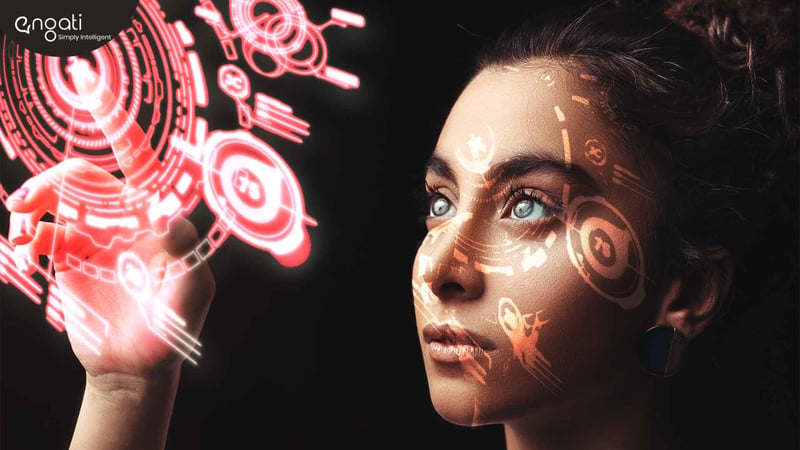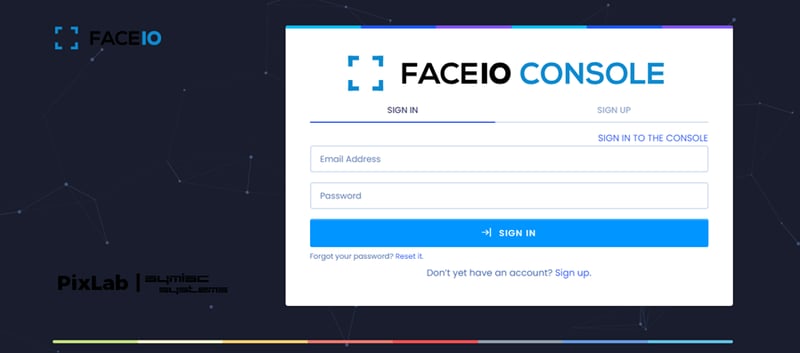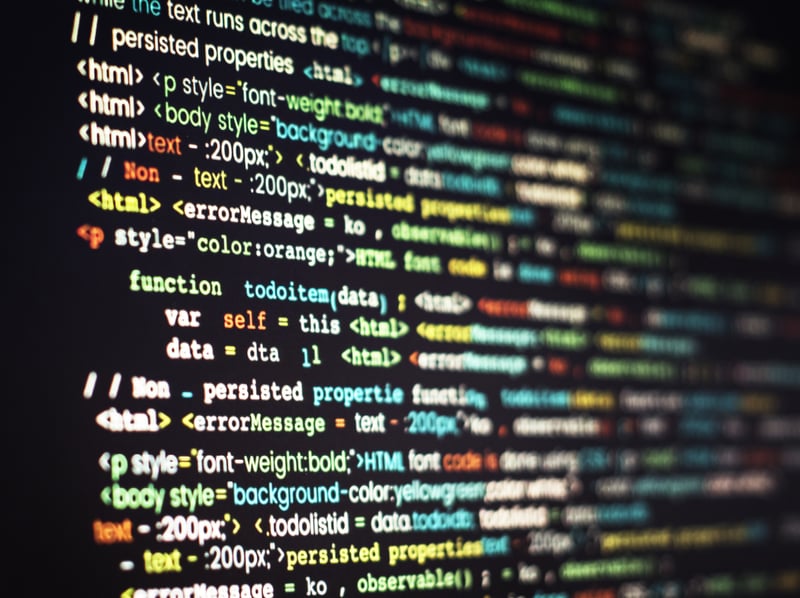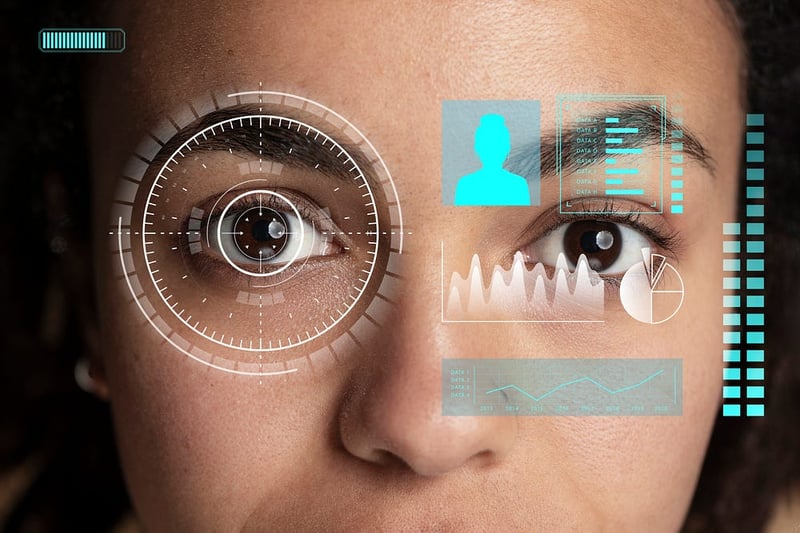
In today's world, security and ease of access are paramount concerns for both users and developers. With the number of cyber threats increasing and the demand for frictionless user experiences, integrating advanced security measures has become crucial. One of the cutting-edge technologies that makes this possible is facial recognition. This technology not only provides robust security but also enhances the user experience by simplifying the login process. Users no longer need to remember complex passwords or go through multiple authentication steps; instead, they can access their accounts with a quick face scan.
Facial recognition technology has made significant advances and is now more accessible than ever for web developers. Integrating facial recognition into web applications can significantly improve both security and convenience. In this comprehensive guide, we will show you how to create a web login system using Vue.js and FACEIO, a powerful facial recognition API. By leveraging FACEIO's capabilities, we can build a secure and user-friendly authentication system. At the end of this tutorial, you will have a working web app that allows users to log in using their faces, providing an efficient and modern solution to traditional login methods.

Facial recognition technology offers a seamless and secure way to authenticate users, transforming the way we approach digital security. Unlike traditional methods that rely on passwords or PINs, facial recognition provides a more intuitive and less intrusive user experience. With the increasing prevalence of biometric technologies, facial recognition has emerged as a reliable and efficient solution for securing web applications. By analyzing and comparing unique facial features, this technology ensures that only authorized users have access, thereby increasing the overall security of the app.
FACEIO is one of the leading providers in the area of facial recognition, offering a robust and easy-to-integrate API for developers. Its API simplifies the process of incorporating facial recognition into web applications, making it accessible even to those with limited experience in biometric technologies. In this tutorial, we will use Vue.js, a popular JavaScript framework, to build a web login system that uses the FACEIO API for authentication. We will guide you through the project configuration steps, integration of FACEIO and implementation of the facial recognition login system. By the end of this tutorial, you will have a functional and secure web login app that improves both security and user experience, providing a modern solution to the challenges of digital authentication.

Before we begin, it's essential to ensure you have the tools and knowledge necessary to follow this tutorial effectively. A basic understanding of JavaScript and Vue.js is crucial as we will be using Vue.js to build the web application. Familiarity with components, state management, and the Vue CLI will be particularly beneficial. If you're new to Vue.js, consider exploring some introductory tutorials or the official Vue.js documentation to get up to speed.
Selain itu, anda perlu memasang Node.js dan npm (Pengurus Pakej Node) pada sistem anda. Node.js membolehkan kami menjalankan JavaScript pada bahagian pelayan dan penting untuk mengurus kebergantungan dan menjalankan pelayan pembangunan kami. Anda boleh memuat turun dan memasang Node.js daripada tapak web rasmi Node.js, yang juga akan termasuk npm. Akhir sekali, anda perlu membuat akaun di FACEIO dan mendapatkan kunci API. Kunci API FACEIO diperlukan untuk menyepadukan keupayaan pengecaman muka ke dalam aplikasi kami. Anda boleh mendaftar untuk akaun dan mendapatkan kunci API anda dengan melawati tapak web FACEIO. Pastikan kunci API anda selamat kerana ia akan digunakan untuk mengesahkan apl anda dengan perkhidmatan FACEIO.
Berikut adalah prasyarat yang diringkaskan dalam bullet point:
Kebiasaan dengan komponen Vue.js, pengurusan negeri dan CLI Vue.
Pertimbangkan untuk meneroka tutorial pengenalan atau dokumentasi rasmi Vue.js jika anda baru menggunakan Vue.js.
Muat turun dan pasang Node.js dari tapak web rasmi Node.js yang juga akan menyertakan npm.
Node.js membolehkan kami menjalankan JavaScript pada bahagian pelayan dan mengurus kebergantungan.


Mula-mula, mari buat projek Vue.js baharu. Buka terminal anda dan jalankan arahan berikut:
npx @vue/cli create face-recognition-login cd face-recognition-login npm install
Arahan ini mencipta projek Vue.js baharu yang dipanggil pengecaman-muka-log masuk dan memasang semua kebergantungan yang diperlukan.

Untuk menyepadukan FACEIO, kami perlu memasukkan SDK JavaScript mereka. Tambahkan teg skrip berikut pada fail index.html anda:
html <! - public/index.html → <!DOCTYPE html> <html lang="en"> <head> <meta charset="UTF-8"> <meta name="viewport" content="width=device-width, initial-scale=1.0"> <title>Face Recognition Login</title> </head> <body> <div id="app"></div> <script src="https://cdn.faceio.net/fio.js"></script> </body> </html>
Teg skrip ini memuatkan FACEIO SDK, yang akan kami gunakan untuk menyepadukan keupayaan pengecaman wajah ke dalam apl kami.

Buat komponen Vue baharu untuk sistem log masuk. Jom panggil Log masuk.vue.
<! - src/components/Login.vue →
<template>
<div class="login-container">
<h2>Login with Face Recognition</h2>
<button @click="initFaceIO">Login</button>
<p v-if="error">{{ error }}</p>
</div>
</template>
<script>
export default {
data() {
return {
error: null,
};
},
methods: {
initFaceIO() {
this.error = null;
const faceio = new faceIO('YOUR_FACEIO_API_KEY');
faceio.authenticate()
.then(userData => {
console.log('User authenticated successfully:', userData);
// Handle successful authentication here
})
.catch(err => {
console.error('Authentication failed:', err);
this.error = 'Authentication failed. Please try again.';
});
},
},
};
</script>
<style scoped>
.login-container {
text-align: center;
margin-top: 50px;
}
button {
padding: 10px 20px;
font-size: 16px;
cursor: pointer;
}
p {
color: red;
}
</style>
Dalam komponen ini, kami menentukan butang yang mencetuskan kaedah initFaceIO apabila diklik. Kaedah ini memulakan SDK FACEIO dan cuba untuk mengesahkan pengguna menggunakan pengecaman muka. Apabila pengguna mengklik butang, SDK FACEIO dimuatkan dan proses pengecaman muka bermula. Jika pengesahan berjaya, maklumat pengguna diambil dan boleh digunakan untuk memberikan akses kepada kawasan selamat aplikasi. Kaedah initFaceIO mengendalikan keseluruhan proses, daripada memulakan SDK kepada menangkap data muka pengguna dan mengesahkannya dengan data yang disimpan. Penyepaduan yang lancar ini memastikan proses pengesahan adalah selamat dan mesra pengguna, mengurangkan keperluan untuk kata laluan dan menjadikan proses log masuk lebih cekap.
Além de inicializar o SDK, o componente também inclui tratamento de erros para fornecer feedback caso o processo de autenticação falhe. Isso é crucial para melhorar a experiência do usuário, pois informa aos usuários sobre quaisquer problemas que possam surgir durante a tentativa de login. Por exemplo, se o rosto do usuário não puder ser reconhecido, o componente pode exibir uma mensagem de erro pedindo ao usuário para tentar novamente ou verificar as configurações da câmera. Ao incorporar esses recursos, o componente não apenas melhora a segurança, mas também garante uma experiência do usuário suave e intuitiva. Além disso, este método pode ser estendido para incluir funcionalidades adicionais, como registrar tentativas de autenticação para auditoria de segurança ou integrar com outros sistemas de autenticação biométrica para fornecer uma abordagem de segurança em várias camadas.

No método initFaceIO, inicializamos o SDK do FACEIO e chamamos o método authenticate. Este método é o núcleo do nosso sistema de login por reconhecimento facial. Primeiro, criamos uma instância do SDK do FACEIO usando nossa chave de API, o que estabelece uma conexão com o serviço FACEIO e o prepara para a autenticação do usuário. O método authenticate então ativa a câmera do usuário e inicia o processo de reconhecimento facial. Isso envolve capturar as características faciais do usuário e compará-las com os dados armazenados para verificar sua identidade. A integração contínua dessas etapas garante que o processo de autenticação seja eficiente e seguro.
Aqui está uma descrição do código:
Ao incorporar essas etapas, garantimos que o sistema de login por reconhecimento facial seja robusto e amigável ao usuário. Além disso, o mecanismo de tratamento de erros melhora a experiência do usuário ao fornecer feedback claro em caso de problemas, orientando-os sobre como resolvê-los. Este método pode ser ainda mais estendido para incluir o registro de tentativas de autenticação para auditorias de segurança, integração com outros sistemas biométricos para segurança aprimorada e personalização das mensagens de erro para fornecer orientações mais específicas aos usuários.
initFaceIO() {
this.error = null;
const faceio = new faceIO('YOUR_FACEIO_API_KEY');
faceio.authenticate()
.then(userData => {
this.loading = false;
console.log('User authenticated successfully:', userData);
// Handle successful authentication here
})
.catch(err => {
this.loading = false;
console.error('Authentication failed:', err);
this.error = 'Authentication failed. Please try again.';
});
}

Para proporcionar uma melhor experiência ao usuário, vamos adicionar um indicador de carregamento enquanto a autenticação facial está em andamento.
Atualize o componente Login.vue da seguinte forma:
<! - src/components/Login.vue →
<template>
<div class="login-container">
<h2>Login with Face Recognition</h2>
<button @click="initFaceIO" :disabled="loading">Login</button>
<p v-if="error">{{ error }}</p>
<p v-if="loading">Authenticating…</p>
</div>
</template>
<script>
export default {
data() {
return {
error: null,
loading: false,
};
},
methods: {
initFaceIO() {
this.error = null;
this.loading = true;
const faceio = new faceIO('YOUR_FACEIO_API_KEY');
faceio.authenticate()
.then(userData => {
this.loading = false;
console.log('User authenticated successfully:', userData);
// Handle successful authentication here
})
.catch(err => {
this.loading = false;
console.error('Authentication failed:', err);
this.error = 'Authentication failed. Please try again.';
});
},
},
};
</script>
Neste componente atualizado, rastreamos o estado de carregamento e exibimos uma mensagem de carregamento enquanto a autenticação está em andamento.

Sebelum menggunakan apl anda, adalah penting untuk mengujinya dengan teliti untuk memastikan log masuk pengecaman muka berfungsi seperti yang diharapkan. Ini termasuk memeriksa sarung tepi seperti keadaan pencahayaan yang berbeza dan pelbagai sudut muka pengguna untuk memastikan pengalaman pengguna yang lancar. Ujian komprehensif akan membantu mengenal pasti dan menyelesaikan isu yang berpotensi, memastikan apl anda teguh dan boleh dipercayai.
Dengan mengikuti langkah ujian dan penyahpepijatan ini, anda boleh memastikan sistem log masuk pengecaman muka anda boleh dipercayai dan memberikan pengalaman pengguna yang positif. Mengenal pasti dan menyelesaikan isu sebelum penggunaan akan menjimatkan masa dan menghalang potensi kekecewaan pengguna.

Tahniah! Anda telah berjaya membina sistem log masuk web menggunakan pengecaman muka dengan Vue.js dan FACEIO. Kaedah pengesahan selamat dan mesra pengguna ini boleh meningkatkan keselamatan aplikasi web anda dengan ketara. Dengan menyepadukan pengecaman muka, anda memberi pengguna cara yang moden dan mudah untuk log masuk, mengurangkan pergantungan pada kata laluan tradisional dan meningkatkan keseluruhan pengalaman pengguna.
Jangan ragu untuk mengembangkan projek ini dengan menambahkan ciri seperti pendaftaran pengguna, pemulihan kata laluan dan pengesahan berbilang faktor. Melaksanakan ciri tambahan ini boleh mengukuhkan lagi keselamatan apl anda dan memberi pengguna lebih banyak pilihan untuk mengakses akaun mereka. Kemungkinannya tidak berkesudahan dengan kuasa teknologi pengecaman muka dan anda boleh terus berinovasi serta menambah baik apl anda dengan meneroka kes penggunaan baharu dan menyepadukan langkah keselamatan lanjutan yang lain.
Untuk membantu menggambarkan projek dan memberikan pemahaman yang lebih jelas tentang pelaksanaan, berikut ialah beberapa contoh visual yang boleh anda tangkap:
Aqui está um exemplo de como capturar esses visuais usando uma ferramenta como o Puppeteer:
Instale o Puppeteer:
npm install puppeteer
const puppeteer = require('puppeteer');
(async () => {
const browser = await puppeteer.launch();
const page = await browser.newPage();
await page.goto('http://localhost:8080');
await page.screenshot({ path: 'login-page.png' });
await browser.close();
})();
Este script instala o Puppeteer, uma ferramenta de navegador sem cabeça, e o utiliza para capturar uma tela da sua página de login.
Ao seguir este guia abrangente, você pode criar um sistema de login por reconhecimento facial seguro e eficiente para sua aplicação web usando Vue.js e FACEIO. Se você é um desenvolvedor buscando melhorar a segurança do seu aplicativo ou um entusiasta explorando novas tecnologias, este projeto oferece uma base sólida para começar. Feliz codificação!
Ao utilizar esses recursos, você pode expandir seu conhecimento e aprimorar ainda mais seu sistema de login por reconhecimento facial. Se você está buscando aprofundar seu conhecimento sobre Vue.js, explorar recursos avançados do FACEIO ou utilizar o Puppeteer para capturar visuais do aplicativo, essas referências o apoiarão na realização dos seus objetivos de projeto.
The above is the detailed content of Building a Secure Web Login System Using Facial Recognition with Vue.js: A Step-by-Step Guide. For more information, please follow other related articles on the PHP Chinese website!
 Server attack defense methods
Server attack defense methods
 How to repair win7 system if it is damaged and cannot be booted
How to repair win7 system if it is damaged and cannot be booted
 How to copy an Excel table to make it the same size as the original
How to copy an Excel table to make it the same size as the original
 How to use find command to find files in linux
How to use find command to find files in linux
 How to switch settings between Huawei dual systems
How to switch settings between Huawei dual systems
 How to set offline status on Douyin
How to set offline status on Douyin
 Causes and solutions of runtime errors
Causes and solutions of runtime errors
 What does python do?
What does python do?




